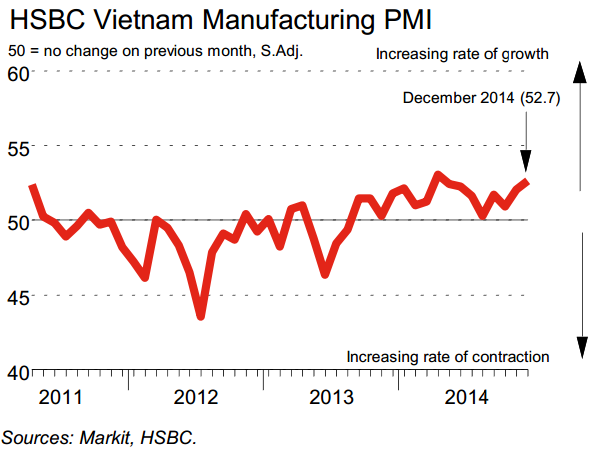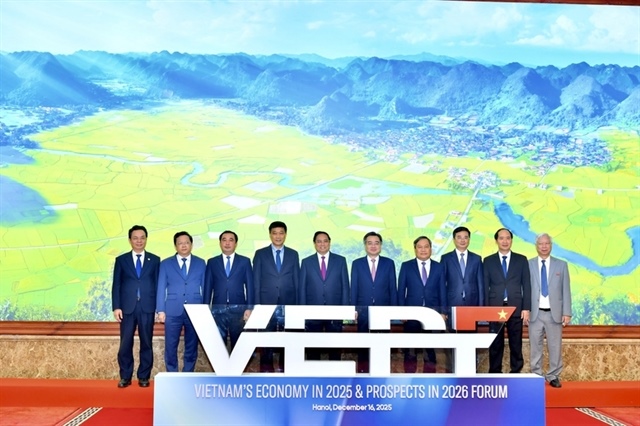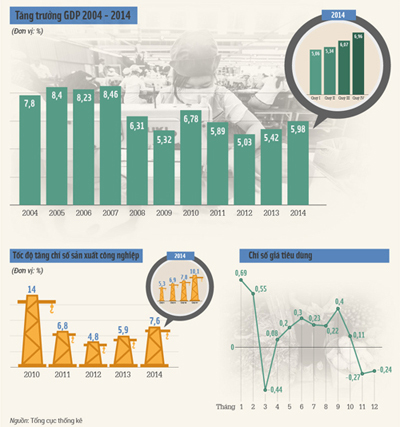HSBC Vietnam Manufacturing PMI™: Strongest growth of manufacturing sector for eight months
HSBC Vietnam Manufacturing PMI™: Strongest growth of manufacturing sector for eight months
Vietnam’s manufacturing sector continued to show signs of strengthening during December, with the latest improvement of operating conditions the best recordedfor eight months. Growth was supported by stronger gains in output and new orders, whilst companies continued to add to their payroll numbers at a solid rate.

Summary
Vietnam’s manufacturing sector continued to show signs of strengthening during December, with the latest improvement of operating conditions the best recordedfor eight months. Growth was supported by stronger gains in output and new orders, whilst companies continued to add to their payroll numbers at a solid rate.
Meanwhile, latest data also showed emerging deflationary pressures, with both input and output prices continuing to fall, and at faster rates.
The headline seasonally adjusted Purchasing Managers’ Index™ (PMI™) – a composite indicator designed to provide a single -figure snapshot of operating conditions in the manufacturing economy –recorded 52.7 in December. That was up from November’s 52.1 and the highest reading since April. Growth has now been registered for 16 months in a row.
The upturn in operating conditions stemmed primarily from strengthened growth in output and new orders. Panellists reported that customer demand was improving, leading to higher volumes of new work (and subsequently production). Latest data showed that output and new work both rose to the greatest degrees for eight months.
December’s survey indicated that demand improved from both domestic and international sources. New export business rose at a solid rate that was little changed from November’s seven -month high.
With higher production requirements, companies continued to increase their purchasing during December. Moreover,the rate of growth accelerated to
the sharpest since April as companies also sought to rebuild stock in anticipation of further growth in production.
December’s survey showed a second successive monthly increase in inventories of input purchases, while there was also an increase in stocks of finished goods (the sixth in as many months). Companies reported that delays in the delivery of completed goods led to a build-up of stock in warehouses.
Mild capacity pressures were evident in December as backlogs ofwork increased for a second successive month. Companies responded by adding to their staffing
levels for a fourth consecutive month, with the rate of growth solid, despite easing to the lowest since September.
On the price front, December’s survey data indicated that average input costs paid by Vietnamese manufacturers continued to fall. Companies reported that supplier prices, shipping costs and the price of fuel had all fallen when compared to November. Latest data showed that average input prices declined to the greatest degree since July 2012.
Faced with a reduction in their input costs, manufacturers chose to lower their average prices charged in December. Competitive pressures and efforts to stimulate demand also led to the sharpest fall in output charges for a year -and-a-half.
Comment
Commenting on the VietnamManufacturing PMI™ survey, Trinh Nguyen, Asia Economist at HSBC said:“Vietnam's acceleration of manufacturing activity stands
in sharp contrast to decelerating momentum elsewhere. Demand for Vietnamese goods rose, both externally and domestically. We believe that the manufacturing
sector will benefit from both wage cost competitiveness and lower input prices, thanks to declining global brent costs. We expect output to continue to expand in coming months, with some seasonal slowdown due to the Lunar New Year.





















